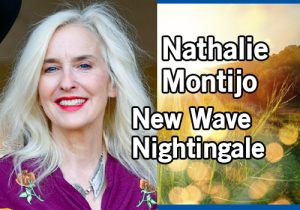While not as deadly as COVID-19, monkeypox is still serious
 CONTRA COSTA COUNTY, CA (August 19, 2022) — At a time when we at the top of the primate pile have had more than enough infectious diseases over which to obsess, enter monkeypox.
CONTRA COSTA COUNTY, CA (August 19, 2022) — At a time when we at the top of the primate pile have had more than enough infectious diseases over which to obsess, enter monkeypox.
The name itself does nothing to alleviate that vague sense of terror with which we have all grown accustomed to living. Thankfully, monkeypox does not appear destined to be the thing that ends us all – but it is making its presence felt.
As of Aug. 10, the United States had tracked more than 10,000 cases. Earlier this month, Johns Hopkins identified 26,000 cases globally.
Monkeypox is a viral disease of the Orthopoxvirus genus. This group includes some bona-fide bad biology like smallpox as well as some more benevolent variants such as cowpox. Observed by physician/vaccine pioneer Edward Jenner, cowpox was common in dairymaids who appeared as a group to have an uncanny immunity to smallpox. Using cowpox, Jenner developed and administered the first rudimentary but effective smallpox vaccine in 1796. The word “vaccine” actually derives from the Latin word for cow.
Officials first identified monkeypox in 1958 in a colony of monkeys kept for research, leading to the slightly misleading moniker. It is far more common in rodents and may be passed to humans through the bite or scratch of an infected animal.
Although this disease has heretofore been observed primarily in Central and West African countries, there is a significant uptick in cases in Europe, Canada and the United States. It is spreading much faster than anyone anticipated.
There are two effective vaccines to combat monkeypox and a massive public health mobilization to quickly deliver them to those at highest risk, but vaccines stores are woefully low as the world was unprepared to deal with yet another large-scale disease outbreak.
The early symptoms of monkeypox resemble the flu (Doesn’t everything?): fever, malaise, swollen lymph nodes and body aches. One to three (or more) days after onset of fever, the characteristic rash develops. The rash can appear on any part of the body but is commonly found in the groin, hands, feet, chest, mouth and face.
The rash generally begins as small firm bumps that evolve into blisters as the disease progresses. These lesions may initially be painful but become itchy as healing begins. A person remains contagious until all the lesions have crusted, healed and resolved.
Human to human monkeypox is most efficiently spread through direct contact with the rash of an infected person. It can also be spread during prolonged face-to-face contact through respiratory droplets. It is possible to contract the disease through contact with clothing or linens that have touched the lesions of an infected person.
In health-care settings, workers employ contact precautions that involve Personal Protective Equipment (PPE) including a gown, gloves and mask.
The best means of protection from monkeypox – and most everything else – is exemplary hand hygiene practices. Remaining mindful of what we touch and frequently gelling and/or washing hands is the most effective way of curbing the spread of disease.
The greater the community participation in basic hand hygiene principles and practices, the safer we will all be from the scourge of microbial disease.
In the words of some other famous Monkees: “You know that it’s true. It’s a little bit me, and it’s a little bit you … too.”
Send comments and question to newwavenightingale@gmail.com.
Related story: Monkeypox vaccine appointments now available in Contra Costa County

Nathalie Montijo
Nathalie Raven Archangel-Montijo holds a rather interesting array of degrees and certifications, including master’s in nursing and traditional Chinese medicine (TCM). She has post-master certification as an adult geriatric primary care nurse practitioner (AGPCNP) and a license to practice acupuncture in California (L.Ac). To round all that out, she is certified in infection prevention and control (CIC) and as an advanced certified Hospice and palliative care nurse (ACHPN).
She also performs in the outlaw country band, Nineteen Hand Horse.
